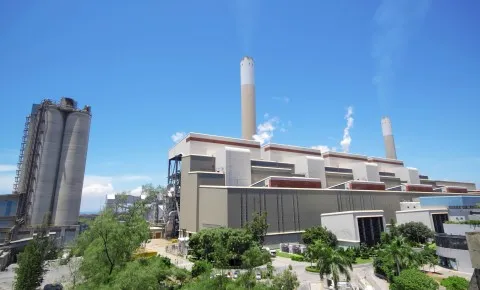
Is thermal power Taiwan's new energy darling?
It could potentially fill the gap left by its nuclear phase-out.
When the Taiwanese government decided to yield to public demand to stop nuclear power generation, it gave itself until 2025 to find a way to boost the combined share of wind and solar power to 20% and effectively offset the loss of nuclear power. But thermal energy just might end up filling the void following Taiwan’s planned nuclear phase-out.
Tim Ferry, associate editor at American Chamber of Commerce in Taiwan, reckons the loss of four out of Taiwan’s six nuclear reactors — which were stopped and not restarted due to heavy opposition — would leave a 9% hole in the country’s total power generation.
Wind and solar power should gain strong momentum across the island in the wake of strong anti-nuclear power sentiment that pushed the government to halt nuclear power generation by 2025, but some analysts are less optimistic about the prospect of non-hydro renewables than they are about thermal energy.
“The government has outlined ambitious expansion targets for the solar sector,” says BMI Research. “However, the country's track-record of frequent changes to renewable energy policy and previous failures to meet sector expansion targets informs our relatively conservative renewables sector forecasts at present.”
As such, BMI Research forecasts non-hydro renewables capacity to total just under 5 gigawatt (GW) by 2026.
Thermal sources, meanwhile, will grow in importance over the coming decade. Led by coal and liquefied natural gas (LNG), total thermal power output is expected by BMI Research to grow by over 60% between 2015 and 2026. Thermal energy’s contribution to total electricity generation should also shoot up to over 95%.
“The project pipelines for both coal and gas power plants have strengthened notably and totals a combined 11 GW,” says BMI Research, “The gradual commissioning of these facilities will result in Taiwan's increased reliance on thermal imports, and coal and LNG demand will grow accordingly.”
But an upward revision of renewables capacity forecasts is still in the cards, pending “tangible progress in the sector and a strengthening of the project pipeline.”








![Cross Domain [Manu + SBR + ABF + ABR + FMCG + HBR + ]](https://cmg-qa.s3.ap-southeast-1.amazonaws.com/s3fs-public/styles/exclusive_featured_article/public/2025-01/earth-3537401_1920_4.jpg.webp?itok=WaRpTJwE)
![Cross Domain [SBR + ABR]](https://cmg-qa.s3.ap-southeast-1.amazonaws.com/s3fs-public/styles/exclusive_featured_article/public/2025-01/pexels-jahoo-867092-2_1.jpg.webp?itok=o7MUL1oO)









 Advertise
Advertise


